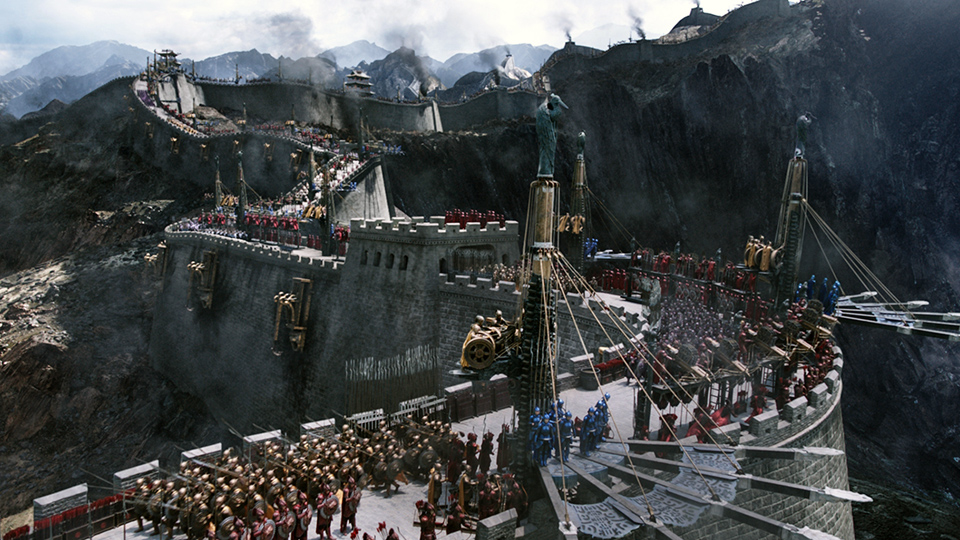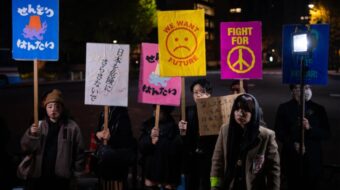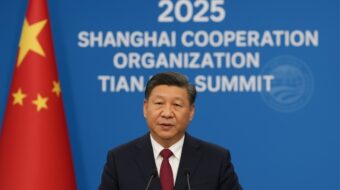
Aside from some stunning cinematography, special effects and scenery, this U.S.-China co-production lensed, according to IMDB.com, on location in Qinqdao and New Zealand (!) is more about cashing in on the growing international audience of the PRC and USA. The use of Real 3D and IMAX 3D is what The Great Wall is really all about — not a story or, heaven forbid, character development — although to be sure, there is a hidden propagandistic message about Beijing’s military might and policies. Put your 3D glasses on and your brains into neutral to watch this vapid but eye-popping big budget picture which, at $135-150 million, is reportedly the most expensive movie ever made in China.
The not-so-great Great Wall is set around 1000 CE during the Song Dynasty, when Westerners seeking what’s called “Black Powder” — gunpowder — venture forth to China on horseback. Mind you, this is a couple hundred years before the Venetian Marco Polo actually traveled to the Middle Kingdom, so you know we’re entering the realm of ahistorical fantasy (or as Kellyanne Conman puts it, “alternative facts”).
Indeed, what might have been an interesting cross-cultural saga is just an excuse for a sprawling monster movie, with Matt Damon and Willem Dafoe embarrassing themselves in front of the camera with what is supposed to be “acting” essentially intended to lure Yankee Doodle dollars to the box office and to give this pic a patina of respectability. Santiago-born Pedro Pascal is added to the mix, presumably to entice Game of Thrones fantasy buffs (he played the HBO series’ Oberyn Martell), plus, methinks, that coveted Chilean demographic.
An explanatory title at Wall’s beginning — by the way, much of the film is in Chinese with English subtitles, which are heaps of fun to read while wearing 3D goggles — claims that China’s 5500-mile long Great Wall, the only manmade object large enough for astronauts to see from outer space, was built not only to keep out invading armies, but according to legend, to prevent monsters called “Taoties” from entering China. Most of Wall’s tediously redundant plot deals with the Westerners joining forces with the Chinese military to defeat the monsters.
Like the early 3D flick 1954’s Drum of Tahiti, with flaming spears and the like being tossed directly toward the camera lens, Wall functions largely as a platform for its high-tech hijinks, with Taotie after Taotie seemingly hurled right at the viewer. But how many flaming cannonballs can one take? After a while, I stopped ducking, because you could see it all coming from a mile away, and I just felt sorry for Damon and Dafoe, that they were so broke (ethically if not financially) that they needed the paycheck from this mindless FX pa-loser.
To be fair, according to the scribbling credits, the masterminds behind this script, such as it is, include frequent Damon collaborators on the Bourne series Tony Gilroy, Ed Zwick and Max Brooks. Although the six (half a dozen, and this is what they come up with?!) accredited scribes are Westerners, like Jackie Chan’s Dragon Blade, Wall appears to embed propaganda for the Chinese military, which is favorably depicted as a well-oiled and -trained, extremely efficient fighting force with surprisingly advanced weaponry for 1000 years ago. In addition to its highly coveted “black powder,” the ancient Chinese invented the air force with a number of hot air balloons (although if they’re so brainy how come they didn’t come up with baskets for passengers to ride in, instead of precarious open air platforms?).
The point seems to be: Don’t mess with China because in addition to our Wall we have such a professionally disciplined, well-equipped military we’ll kick your asses. Also, there seems to be a message about alliances with outsiders: Damon’s William Garin, good; Dafoe’s Sir Ballard (a tutor who made it to Cathay 250 years before Marco Polo), bad; and Pascal’s Pero Tovar — who knows? Which way are the winds blowing the air balloons today?
Interestingly, acrobatic Chinese women warriors play an amazingly Amazon-like militaristic role — at times, it’s like a Sino Cirque Soleil! Most of the cast, of course, is Chinese, led by Commander Lin Mae of the Crane Troop (English-speaking actress Jing Tian), who is quite sexy in her form-fitting armored outfit. Although Lin and William longingly exchange goo-goo eyes, they do not so much as exchange a kiss. There is a long tradition of Western males “conquering” the exotic female from the East onscreen, but presumably in their mercenary movie mission to maximize moolah by selling tickets and popcorn, this might have been considered a sensitive sticking point that could offend Asian viewers. Better stick to the non-stop, brainless violence, if you want boffo box office!
This blockbuster is mostly for moviegoers who enjoy monster movies and/or special FX-laden flicks long on gimmicky explosions and short on anything remotely resembling the human condition as it is lived here on Planet Earth. To give it its due, Wall does have some breathtaking scenery, although Qinqdao, where much of it is shot, is located near China’s East Coast, nowhere near the real Great Wall. Versions of it had to be built for the film that contains this structure in its very title. Those of us hankering to get views of this eighth wonder of the world won’t even get that in the movie named after it. (It’s interesting that The Great Wall emerges just as The Donald rants and raves about building another really yuuuuuge one along the Mexico border.)
For those of us who love cinema as an art form, what’s most disappointing is the depth to which some of the talents associated with this pic have sunk. Willem Dafoe’s acting career was launched by the stellar Wooster Group, an experimental theater located in the Performing Garage in Manhattan’s SoHo area. He proceeded to deliver bravura performances in Oliver Stone’s 1986 Platoon and as the title character in Martin Scorsese’s 1988 The Last Temptation of Christ. Dafoe went Hollywood and by 2002 was playing the Green Goblin in the comic book flick Spider-Man. The actor who once played Max Shreck completely squanders his talent on this drek.
What’s even sadder is that The Great Wall’s great helmsman is none other than Zhang Yimou, who became a leading light of PRC’s post-Cultural Revolution “Fifth Generation” of filmmakers, with hard hitting, intense, often sensuous dramas such as 1987’s Red Sorghum, 1990’s Ju Dou, 1991’s Raise the Red Lantern and 1995’s Shanghai Triad. By 2002, with Hero, Zhang was shooting “Wu Xia” films, a genre of stylized, fantasy kung fu pictures influenced by Hong Kong movies, including 2004’s House of Flying Daggers and 2006’s Curse of the Golden Flower. Now, with Wall, Zhang has gone full circle, abandoning the character studies of his sociological earlier work for empty spectacles. And to make matters worse, his films starring Gong Li were far sexier than The Great Wall, which may enthrall fan boys titillated by monsters and FX but will bore the pants off of most everyone else, as artistry is sacrificed on the altar of the almighty buck and high-tech filmmaking. Ka-ching!!!
The Great Wall
Director: Yimou Zhang
Stars: Matt Damon, Tian Jing, Willem Dafo, Andy Lau, Pedro Pascal
103 min, PG-13










